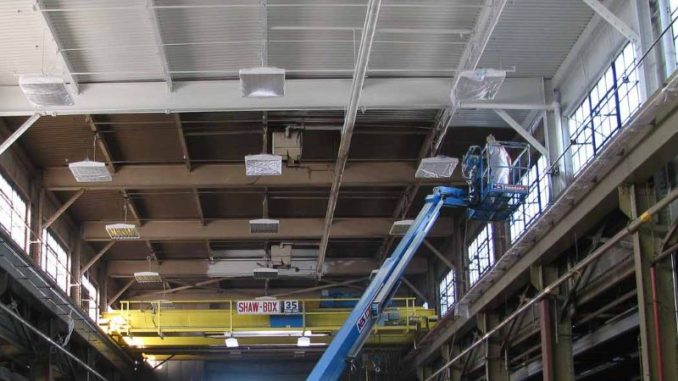
In the ever-evolving world of industry, the role of aesthetics combined with functionality is becoming increasingly significant. The way a facility looks can not only influence perceptions but also impact its operational efficiency. This evolution has placed a spotlight on industrial painting, a field that extends far beyond mere surface treatment.
The Significance of Colour in Industrial Settings
The choice of colour in industrial environments is not a decision to be taken lightly. It goes beyond the visual appeal, playing a crucial role in safety, productivity, and even employee morale. Different hues can dictate the mood of a workspace, with brighter colours often being used to energize employees, while cooler tones are selected for their calming effects.
Moreover, colour coding is integral to maintaining safety standards. Specific colours are used to mark hazardous areas, pathways, and equipment, which helps in reducing workplace accidents and ensuring a smooth flow of operations.
Innovations in Paint Technology
Recent advancements in paint technology have revolutionized industrial painting. The development of coatings that are more durable, environmentally friendly, and easier to apply has transformed the way industries approach maintenance and aesthetics. For instance, the use of epoxy and polyurethane coatings has provided solutions for high-wear areas, offering resistance to chemicals, abrasion, and extreme temperatures.
Another noteworthy innovation is the introduction of smart paints. These are equipped with properties like self-healing, corrosion detection, and temperature responsiveness, adding a layer of functionality that extends the life of industrial equipment and structures.
Eco-Friendly Shift in Industrial Coatings
The move towards eco-friendly practices in industrial coatings is gaining momentum. Emphasizing low volatile organic compounds (VOCs), the industry is embracing water-based paints as a greener alternative to traditional solvents. These advancements contribute to a healthier planet and safer working conditions. Additionally, the development of sustainable materials and processes underscores the industry’s commitment to environmental responsibility. This shift not only addresses ecological concerns but also meets the growing demand for sustainable solutions in industrial maintenance and aesthetics.
Overcoming Obstacles in Industrial Coatings
In the realm of industrial coatings, balancing efficiency with quality presents a significant challenge. Downtime for application and drying impacts productivity, driving the development of quick-dry formulas to minimize operational disruptions. Adapting to diverse environmental conditions is another hurdle, met by innovative coatings that can be applied under varied weather scenarios. These solutions not only enhance the application process but also ensure longevity and durability of the coatings, addressing key concerns in maintaining industrial infrastructure.
Adapting to Regulatory Changes
The industrial painting sector is swiftly adapting to global regulatory changes aimed at enhancing worker safety and environmental protection. These changes often mandate the use of non-toxic, low-emission paints and necessitate compliance with stringent application and disposal procedures. Companies are investing in training and technology to meet these regulations, ensuring their painting practices are not only efficient but also responsible, reflecting a commitment to sustainability and worker well-being.
Visionary Trends in Industry Coatings
As we progress, the domain of industry coatings will witness significant advancements. The integration of AI and robotics for precision in application, development of smarter, self-healing paints, and a shift towards custom colour solutions for unique branding are on the horizon. These innovations promise to enhance efficiency, sustainability, and aesthetic appeal, ensuring that the coating processes remain at the forefront of industrial evolution.
Conclusion
In conclusion, the field of industrial painting is undergoing a remarkable transformation, driven by technological innovation, environmental consciousness, and the need for operational efficiency. As the industry navigates through challenges, the adoption of advanced materials, sustainable practices, and cutting-edge application techniques underscores a commitment to progress and excellence. This evolution not only enhances the functional and aesthetic aspects of industrial facilities but also signifies a responsible approach towards the environment and workplace safety, setting a new standard in the industrial realm.

Leave a Reply